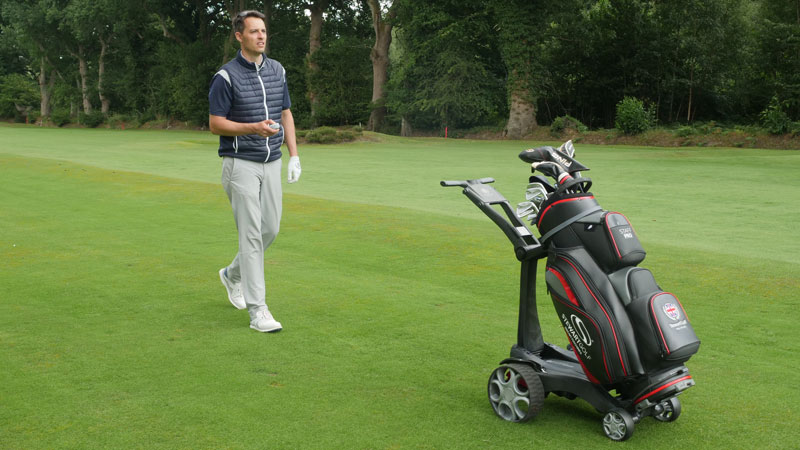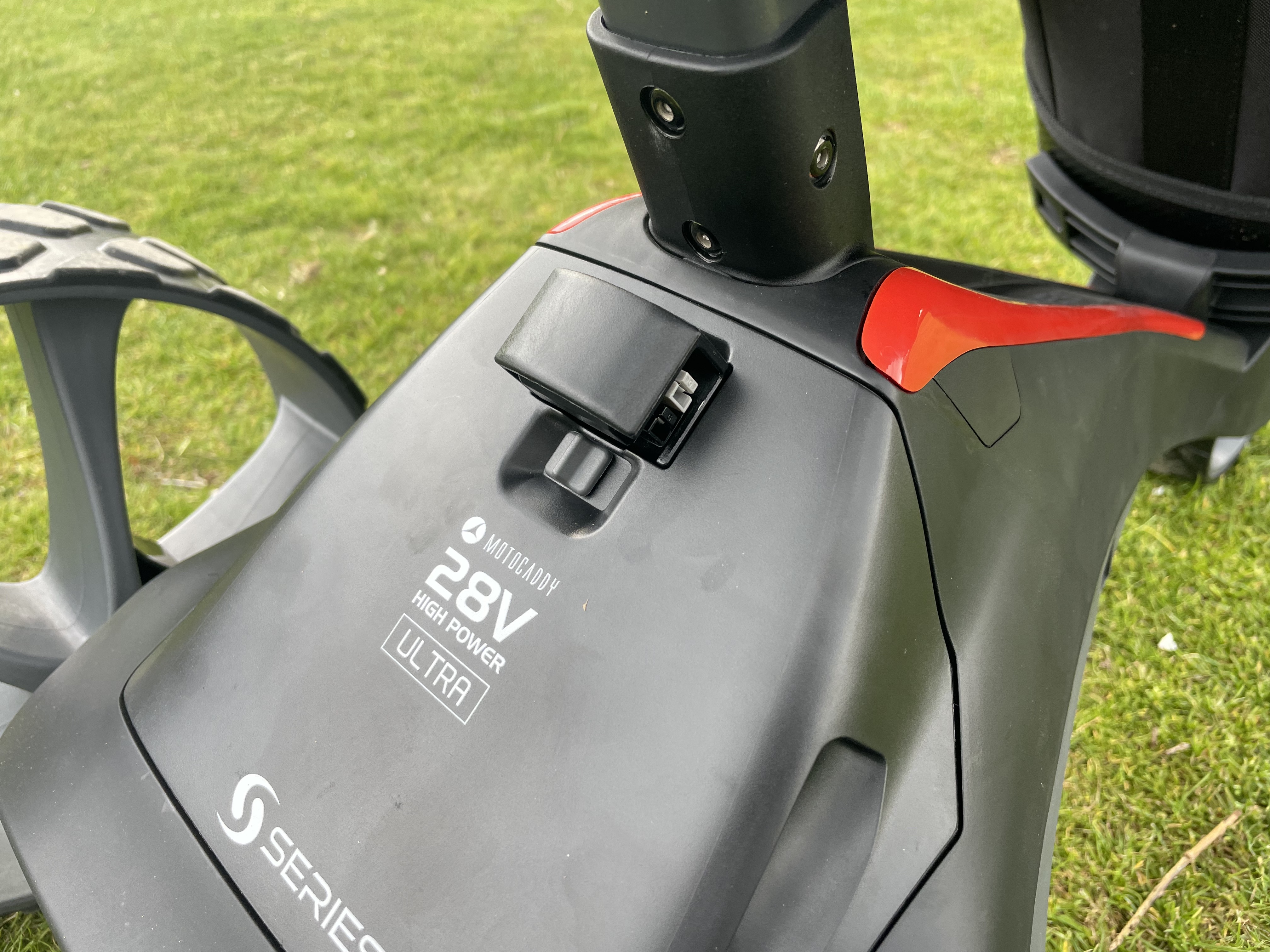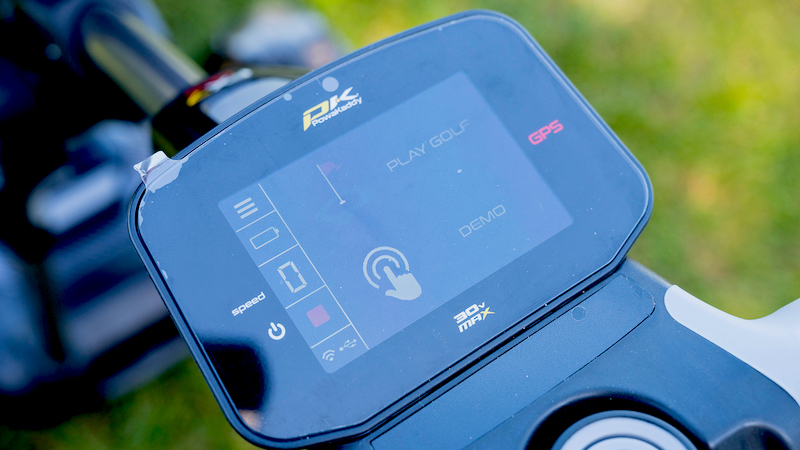How To Choose A Golf Trolley
How to choose a golf trolley... Power or push? Feature-packed or streamline? 18-hole or 36-hole battery? Remote control? There's much to consider


Sam Tremlett
How To Choose A Golf Trolley
There has been a sea change over the last 30 years in all golf equipment categories, but perhaps none more so than the golf trolley. The best golf push trolleys on the market are now a far cry from the rudimentary two-wheel affairs you had to drag along awkwardly behind you. And the best electric golf trolleys are in a different league altogether from the heavyweight, cumbersome and unreliable beasts of yesteryear.
You can even get, admittedly expensive, remote control golf trolleys that will tag along behind you at your beck and call. Here, we pick out the main things you need to consider when looking to buy a golf trolley for the first time or upgrade your existing one…
Additionally if you are in the US, we recommend checking out our guides on the best golf carts and best golf push carts too.
How To Choose A Golf Trolley
Power or push?
The first consideration is whether or not you need, or wish for, motorized assistance. Cost will be a key factor in this decision. But although non-motorized push trolleys are generally the cheaper option, there will be a degree of overlap between the most expensive three-wheel push trolleys and the cheapest power trolleys. You also need to factor in whether or not you’re up for the extra effort and organization required to get an electric trolley recharged and ready for the next round, although this is now a considerably easier process than in days gone by.
Finally, do you really need a power trolley? If you mostly play over hilly courses or undulating terrain, then yes, it will take more of the strain for you. But if you play most of your golf on flat courses, it may not be such a pressing priority as today’s three-wheel push trolleys are lightweight and blissfully free-wheeling.
Remote control
If you decide to go for an electric trolley, the next consideration is whether you want to go down the remote control route. Remote control golf trolleys from the likes of Stewart Golf and others have been around for a few years now and are well beyond the mere novelty stage.
Get the Golf Monthly Newsletter
Subscribe to the Golf Monthly newsletter to stay up to date with all the latest tour news, equipment news, reviews, head-to-heads and buyer’s guides from our team of experienced experts.
Price is, of course, a huge factor here with the Stewart Golf Q Follow setting you back a fairly large sum! And at certain clubs, having a trolley follow you around hands-free may sometimes leave fellow golfers just itching for you to come a cropper somewhere! But as with all things in life, if you want the best of the best and have the necessary funds, then why not?

Battery capacity
If you do go electric, what kind of battery capacity do you need? Simple plug and play systems like Powakaddy's, plus the scope to charge batteries in situ on the trolley, have taken away much of the former faff of battery charging. Batteries have come a long way in recent years, with lighter, more powerful lithium options arriving on the scene. Motocaddy says that over 90% of golfers now opt for lithium batteries over the heavier lead-acid models.
You still need to decide whether you only need an 18-hole battery or go to the added expense of an extended or 36-hole battery.

Weight
Whatever trolley you opt for, you’re going to be maneuvering it in and out of your garage, car boot or golf club’s trolley store every time you use it.
So, make sure the trolley you purchase will be suitably manageable, especially if you have a dodgy back. Check the manufacturer’s website for weight, and ideally try handling one in store before you buy or get a friend with the same model to let you check it out.
Size and storage
On a similar practical note, you need to make sure that the trolley’s size and shape will fit comfortably in both the car boot and where you intend to store it at home. Therefore it is definitely worth considering some of the most compact golf trolleys on the market too because they can fold down so well without taking up much room in your garage, car, or wherever you keep your golf gear.
Two of our favorite examples are the PowaKaddy CT8 GPS Trolley, and the Bag Boy Nitron Push Cart so check out our full reviews on both of those models.
Features
Now we’re into the realms of personal preference. Electric trolleys in particular are now packed with all sorts of extras, little and big, so you need to decide what sounds genuinely useful, and what may sound great, but in reality you would never use.
We’re not going to go into every little feature available on a trolley somewhere here, but do you need: a handy pouch for all your bits and pieces; a USB charging port; a function that lets you send it set distances on its own; a color screen to display GPS distances and info? The answers may be yes to all of these and more, but it’s worth deciding what your essentials are so you don’t end up potentially paying for features you will never use.

GPS and connectivity
A number of electric trolleys, such as Motocaddy’s M5 GPS, now come with fully integrated GPS functionality built in. Such models will come at additional cost - PowaKaddy’s FX7 GPS for example, so the question is, do you really need or want it?
If you like the idea of having it all there in front of you with no further faffing required, then it might be for you. If you really like what you’re already using for distances and yardages, then maybe it’s an unnecessary extra expense.
Equally, some trolleys allow you to receive smartphone notifications and alerts through the trolley’s screen. Would that be useful to you or would you rather your four hours away from it all on the course were free from work and/or family distractions? Either way, you might find the USB charging facility on some trolleys a useful opportunity to recharge your devices for when you do return to the world of work.
We hope you have found this article on how to choose a golf trolley useful.

Jeremy Ellwood has worked in the golf industry since 1993 and for Golf Monthly since 2002 when he started out as equipment editor. He is now a freelance journalist writing mainly for Golf Monthly. He is an expert on the Rules of Golf having qualified through an R&A course to become a golf referee. He is a senior panelist for Golf Monthly's Top 100 UK & Ireland Course Rankings and has played all of the Top 100 plus 91 of the Next 100, making him well-qualified when it comes to assessing and comparing our premier golf courses. He has now played 1,000 golf courses worldwide in 35 countries, from the humblest of nine-holers in the Scottish Highlands to the very grandest of international golf resorts. He reached the 1,000 mark on his 60th birthday in October 2023 on Vale do Lobo's Ocean course. Put him on a links course anywhere and he will be blissfully content.
Jezz can be contacted via Twitter - @JezzEllwoodGolf
Jeremy is currently playing...
Driver: Ping G425 LST 10.5˚ (draw setting), Mitsubishi Tensei AV Orange 55 S shaft
3 wood: Srixon ZX, EvenFlow Riptide 6.0 S 50g shaft
Hybrid: Ping G425 17˚, Mitsubishi Tensei CK Pro Orange 80 S shaft
Irons 3- to 8-iron: Ping i525, True Temper Dynamic Gold 105 R300 shafts
Irons 9-iron and PW: Honma TWorld TW747Vx, Nippon NS Pro regular shaft
Wedges: Ping Glide 4.0 50˚ and 54˚, 12˚ bounce, True Temper Dynamic Gold 105 R300 shafts
Putter: Kramski HPP 325
Ball: Any premium ball I can find in a charity shop or similar (or out on the course!)
- Sam TremlettSenior E-commerce Editor
-
 Corales Puntacana Championship Prize Money Payout 2025
Corales Puntacana Championship Prize Money Payout 2025The PGA Tour’s latest opposite field event features an attractive prize money payout and some former champions in the field
By Mike Hall Published
-
 RBC Heritage Prize Money Payout 2025
RBC Heritage Prize Money Payout 2025Scottie Scheffler defends his title at Harbour Town in the latest of the PGA Tour’s signature events
By Mike Hall Published